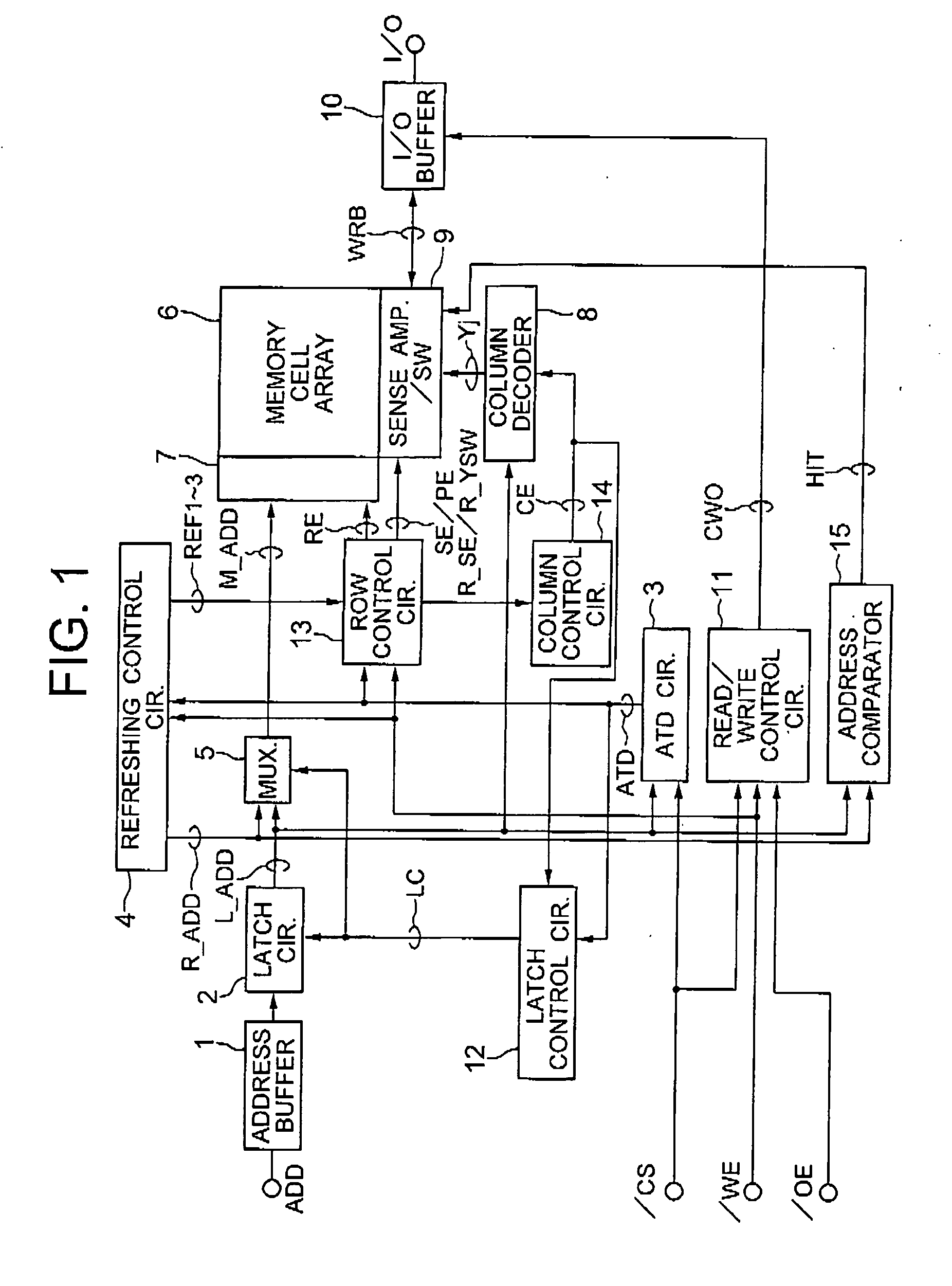Semiconductor memory device having a DRAM cell structure and handled as a SRAM
a memory device and semiconductor technology, applied in semiconductor devices, digital storage, instruments, etc., can solve the problems of difficult to obtain a high operational speed in the memory device comparable, affecting the performance of the memory device, and affecting the operation speed of the memory devi
- Summary
- Abstract
- Description
- Claims
- Application Information
AI Technical Summary
Benefits of technology
Problems solved by technology
Method used
Image
Examples
first embodiment
[0052] Referring to FIG. 1, there is shown a memory device according to the present invention. The memory device includes address buffer block 1, latch circuit 2, address transition detection (ATD) circuit 3, refreshing control circuit 4, multiplexer circuit 5, latch control circuit 12, read / write control circuit 11, address comparator circuit 15, row control circuit 13, column control circuit 14, row decoder 7, column decoder 8, sense amplifier / switch circuit 9, memory cell array 6 and I / O buffer block 10.
[0053] Symbol ADD represents an input address supplied from outside the memory device. The address buffer circuit 1 receives the input address ADD to deliver the same to the latch circuit 2, which delivers the input address ADD supplied from the address buffer circuit 1 as a latched address L_ADD if a latch control signal LC assumes a low level. If the latch control signal LC assumes a high level, the latch circuit 2 holds the latched address L_ADD latched at the rising edge of th...
second embodiment
[0113] Referring to FIG. 10, there is shown a sense amplifier / switch circuit in a memory device according to the present invention. FIG. 11 shows the row control circuit shown in FIG. 10.
[0114] The sense amplifier / switch circuit 9A of FIG. 10 is roughly similar to the sense amplifier / switch circuit 9 of FIG. 2 except that the refreshing sense amplifier 92 in FIG. 2 is replaced by a SRAM-type data memory 97 having a SRAM memory cell structure in FIG. 10 and that NAND gates 911 to 913 are provided in the sense amplifier / switch circuit 9A in FIG. 10.
[0115] More specifically, the sense amplifier / switch circuit of FIG. 10 includes sense amplifier circuit 96, SRAM-type data memory 97, switch block 98, precharge circuit 99, column switch circuit 910, and NAND gates 911 to 913.
[0116] The sense amplifier circuit 96 is used both for the read / write operation for the input address ADD and the refreshing operation. The switch block 98 couples the bit lines BT and BN to respective sense amplifier...
PUM
 Login to View More
Login to View More Abstract
Description
Claims
Application Information
 Login to View More
Login to View More - R&D
- Intellectual Property
- Life Sciences
- Materials
- Tech Scout
- Unparalleled Data Quality
- Higher Quality Content
- 60% Fewer Hallucinations
Browse by: Latest US Patents, China's latest patents, Technical Efficacy Thesaurus, Application Domain, Technology Topic, Popular Technical Reports.
© 2025 PatSnap. All rights reserved.Legal|Privacy policy|Modern Slavery Act Transparency Statement|Sitemap|About US| Contact US: help@patsnap.com



